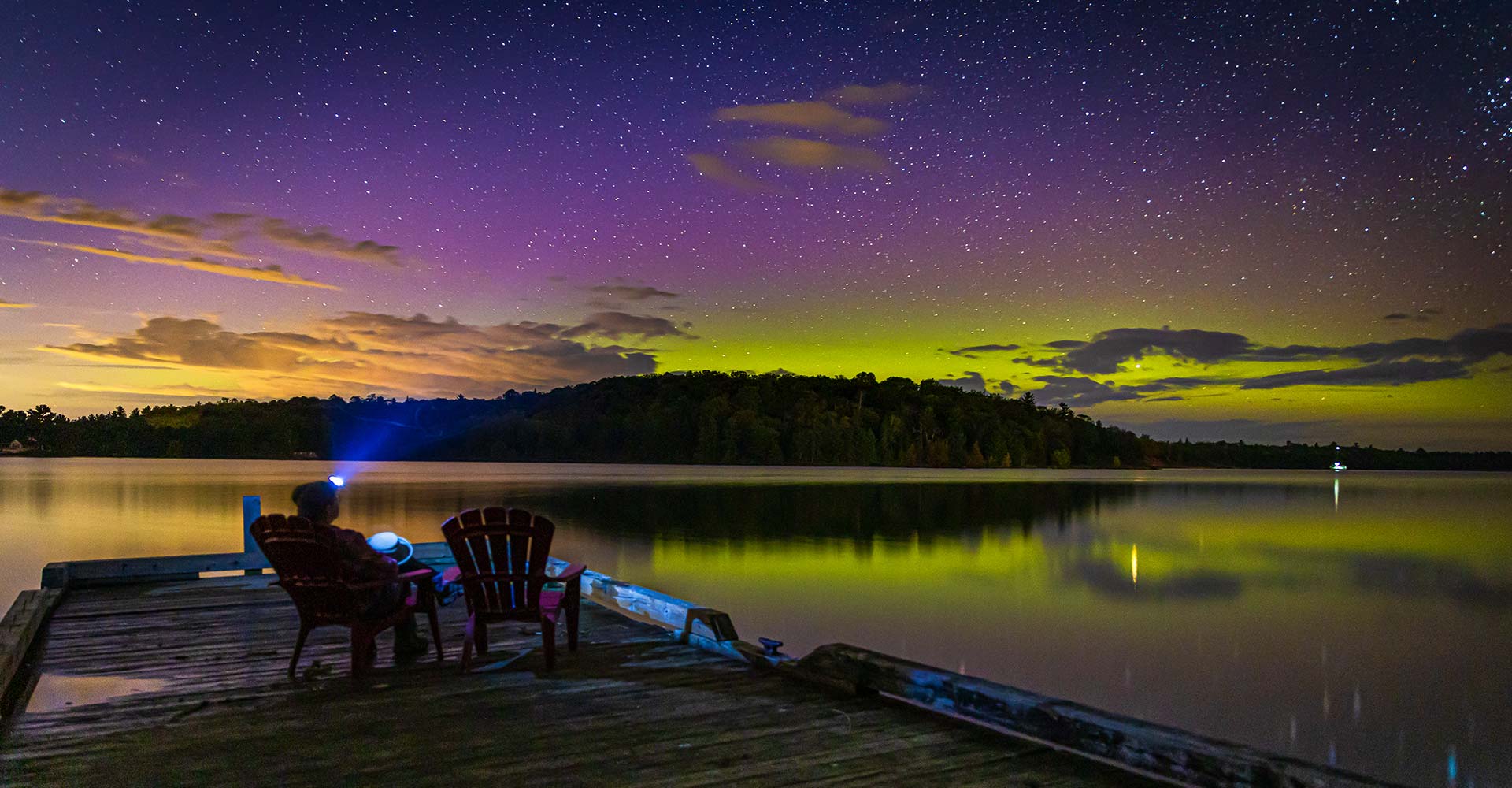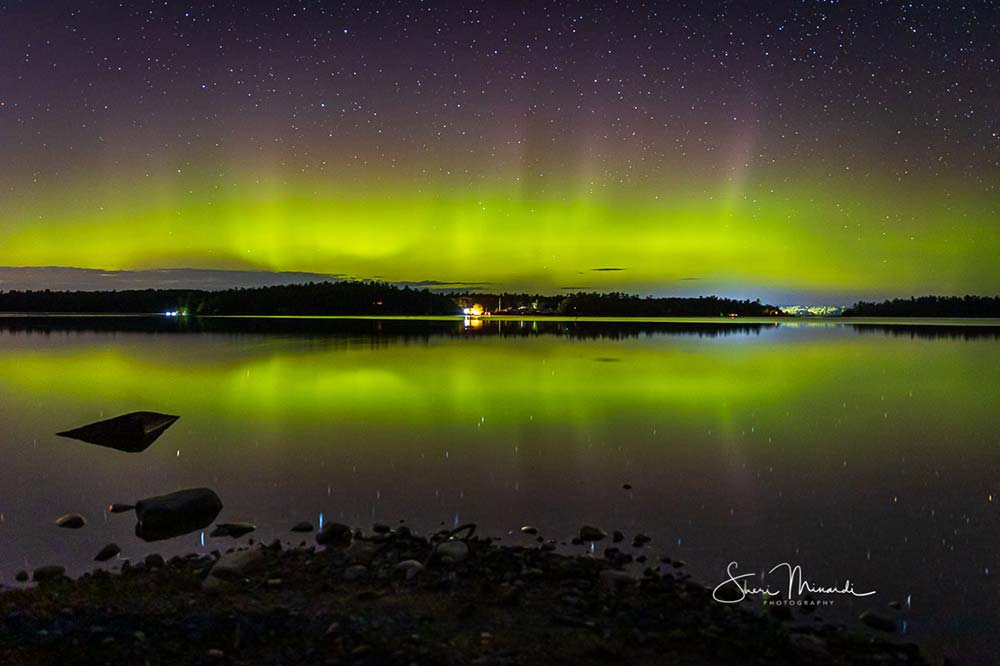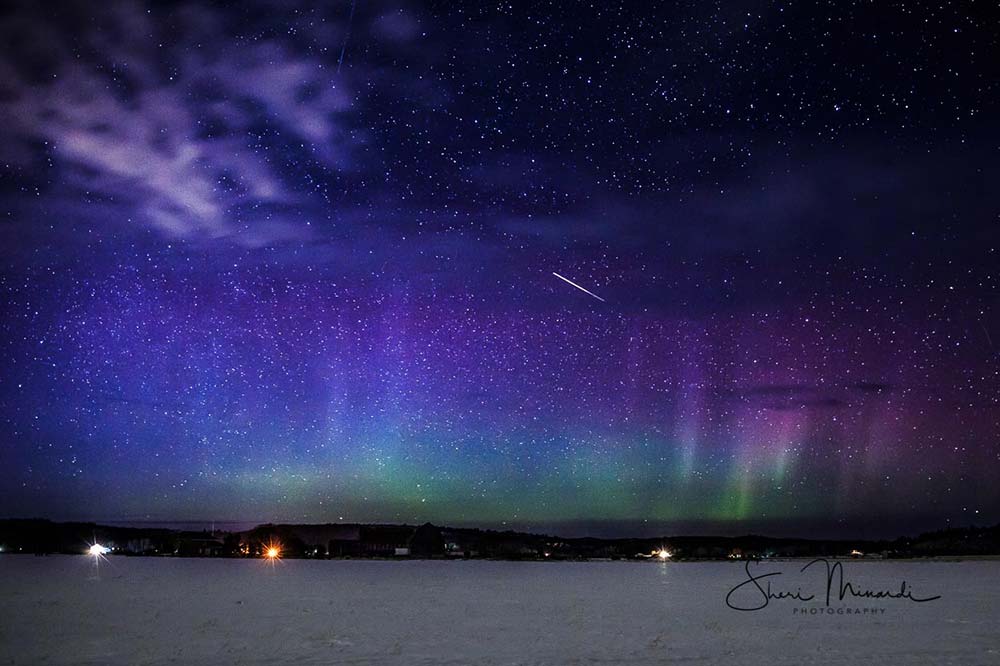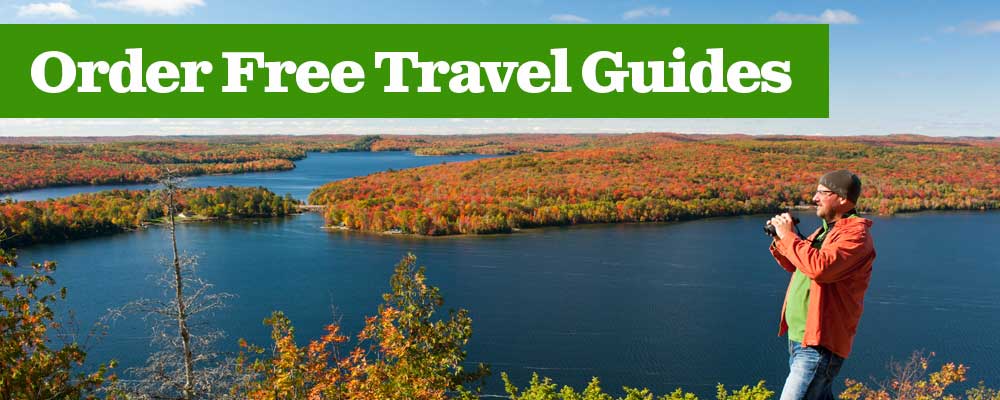The Aurora Borealis AKA – Northern Lights!
While the island sleeps, the night sky is alive and dancing with colour! Yes, the Aurora Borealis can be seen every now and again!
St. Joseph Island is located 62 km or 50 minutes east of Sault Ste. Marie in the District of Algoma. It is east of the St. Marys River on Lake Huron. It really is “Yours to Explore” and I love exploring its nightlife! St. Joseph Island is a great place for dark night skies and amazing Northern Lights.
There is a lot of science involved when setting out to see this beautiful dark sky phenomenon. It does not happen every night. So how do you know when to set out? How do you know the time? How do you know where to go?
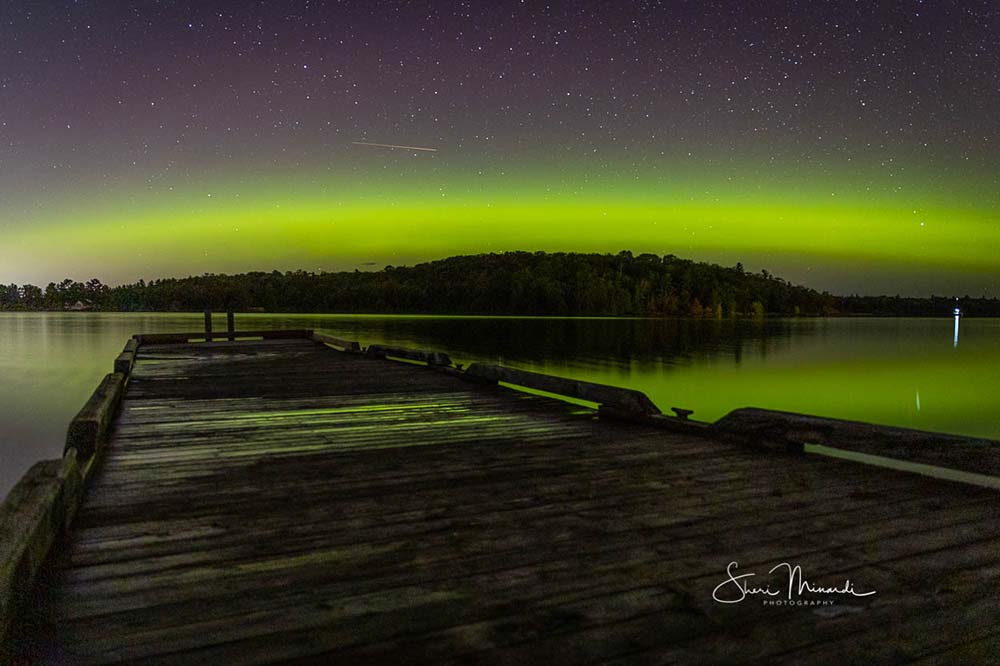
First of all, for your best viewing, you need a DSLR camera with a wide-angle lens. It does not need to be an expensive one. Your average cell phone will not capture the Aurora. You will also need a sturdy tripod as you have to use a long exposure to capture images.
Sometimes the Aurora is very faint and doesn’t look like much to the naked eye. When the aurora does present well, you can see beautiful light pillars with reds, and greens. Your naked eye catches images of the aurora in real-time, minute by minute and that is why it doesn’t look like the images people capture with their cameras.
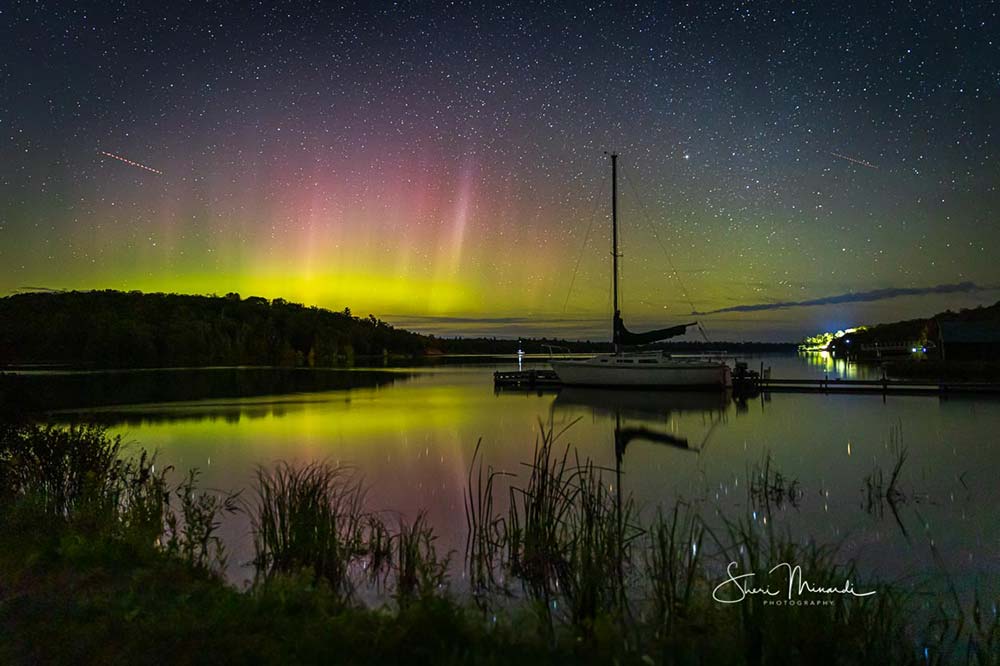
DSLR cameras capture the aurora over a 20- to 30-second-long exposure time. Your DSLR camera records the movement of the aurora borealis over a period of time and creates those stunning images.
The best camera settings for an aurora are 20 to 30-second exposure with your aperture wide open and your ISO anywhere from 1600 to 3200 depending on your camera and lens. Make sure to set your camera on manual focus and your lens to infinity for clarity. You want to use a wide-angle lens for the best results. I frequent my friends at Camera Craft in Sault Ste. Marie for all of my photography needs so pay them a visit to set you up with your gear!
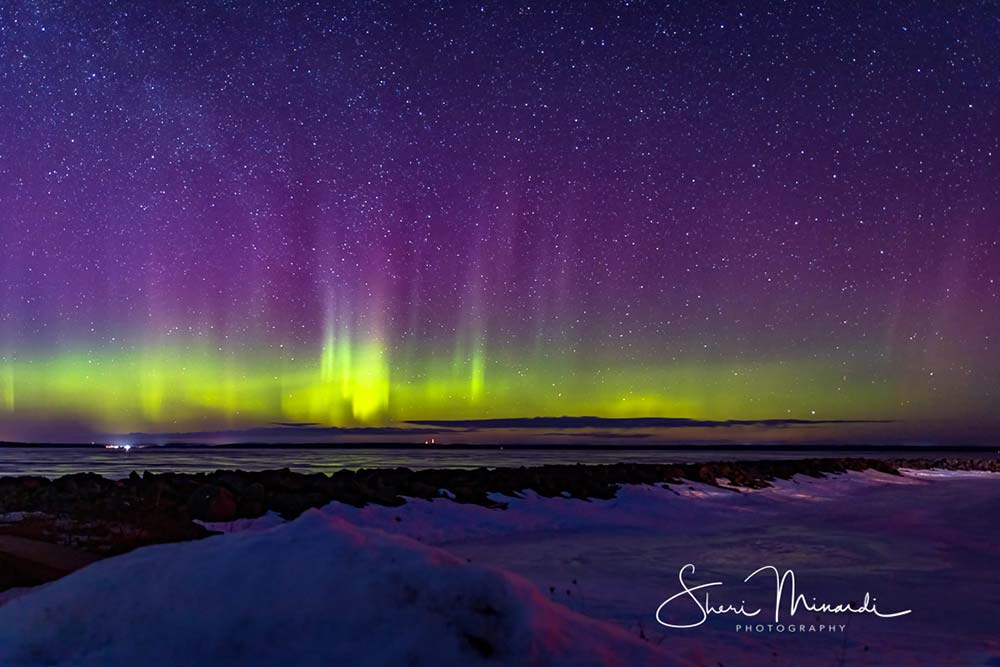
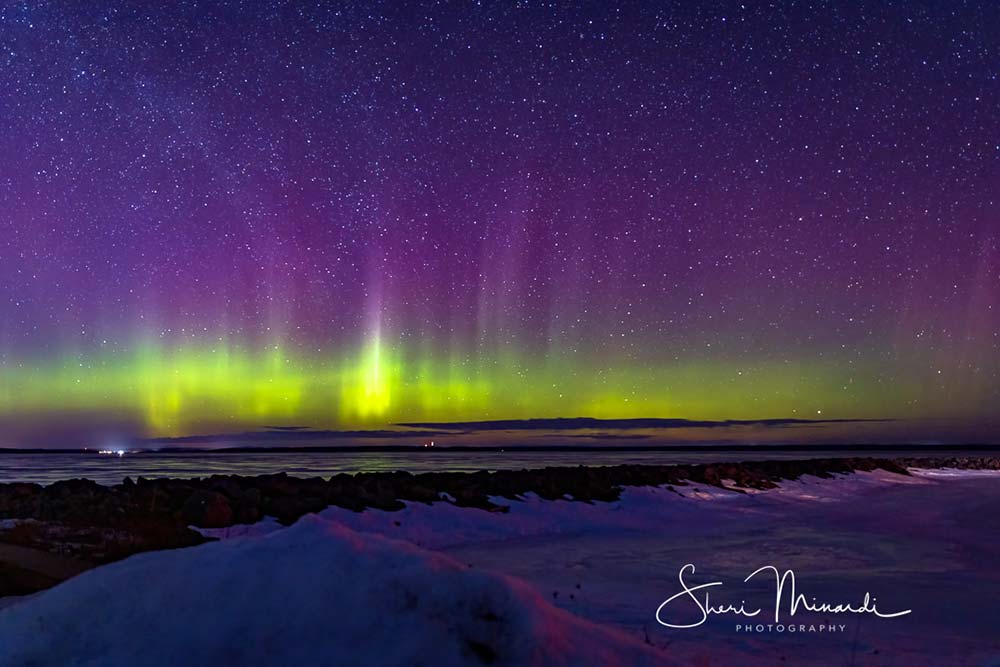
Now that you have your gear and your settings, what is next? I use the app Aurora Pro to let me know when the aurora may begin to show. On the app, you can set a notification to alert you when viewing opportunities may be increasing. I have my app set to a KP of 4 or above. KP is an index that lets you know the global geomagnetic activity based on a three-hour measurement. It ranges from 0 – 9. Zero means there is very little activity and nice means extreme geomagnetic storming. On St. Joseph Island, you need at least a K3 or higher. I prefer a K4 and higher to make it worth going out to look. I also use the website www.auroraforcast.com and belong to the Facebook Group: Great Lakes Aurora Hunters to keep an eye on when the geomagnetic storms are starting.
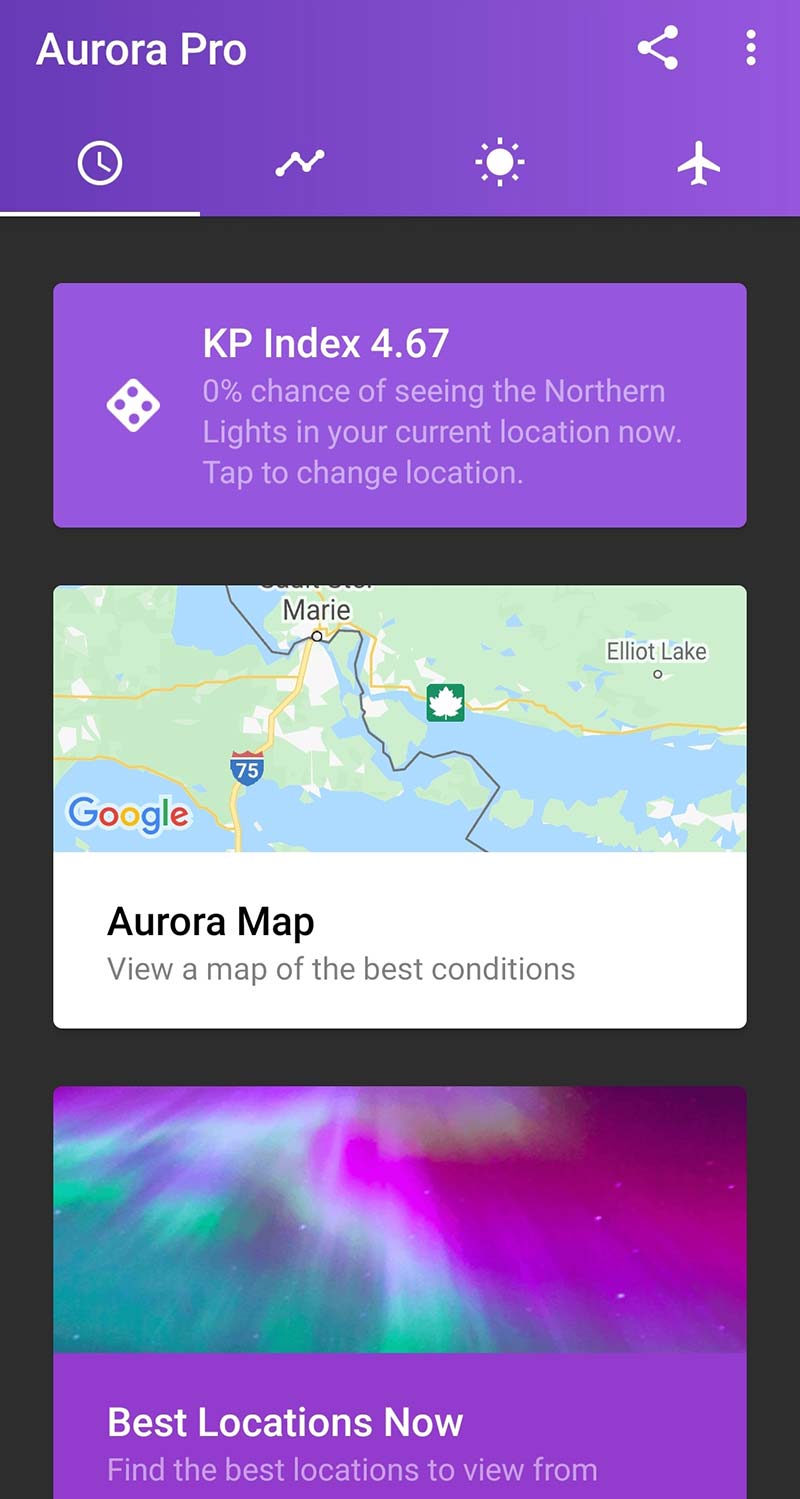
A high KP Index is not the only factor for aurora hunting. You also need to be aware of cloud coverage in the area. If you are clouded in, you won’t be able to see the aurora at all. The Aurora Pro app also gives you cloud coverage information for your area.
The last two factors which can really hinder your aurora hunting are light pollution and being in a location not facing north. For the best results, you want to be in a location that is pitch black and preferably a new moon. The darker the location, the better, to see an Aurora. The location you choose must be facing north with a vast waterscape or landscape in front of you for the best results.
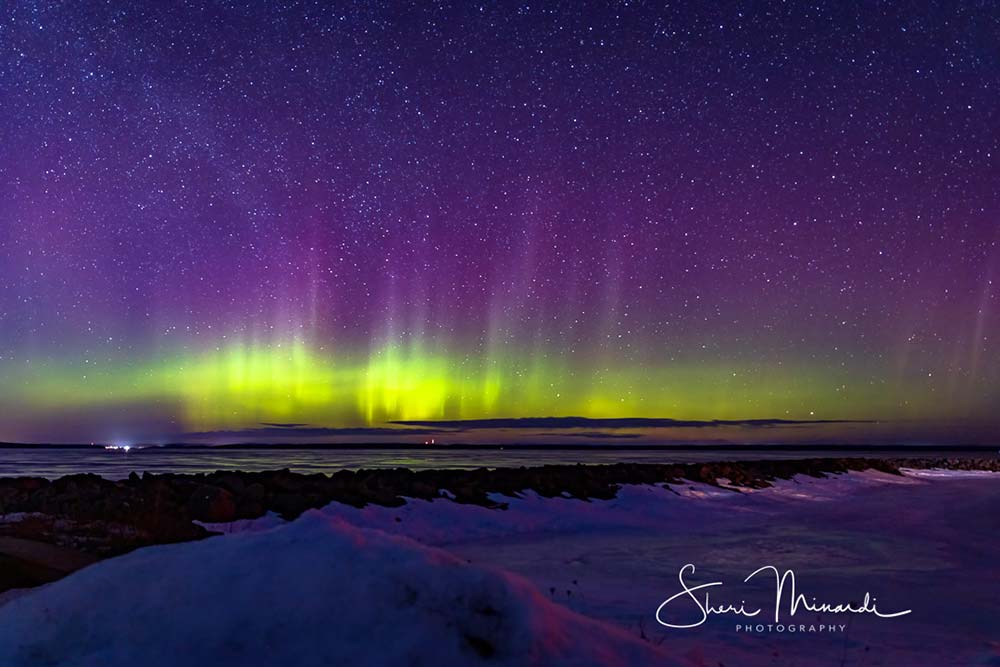
Other important gear for a comfortable evening out are layered clothing, warm footwear, warm gloves and a headlamp. Headlamps are better than flashlights as the headlamp keeps your hands free to work your camera and tripod.
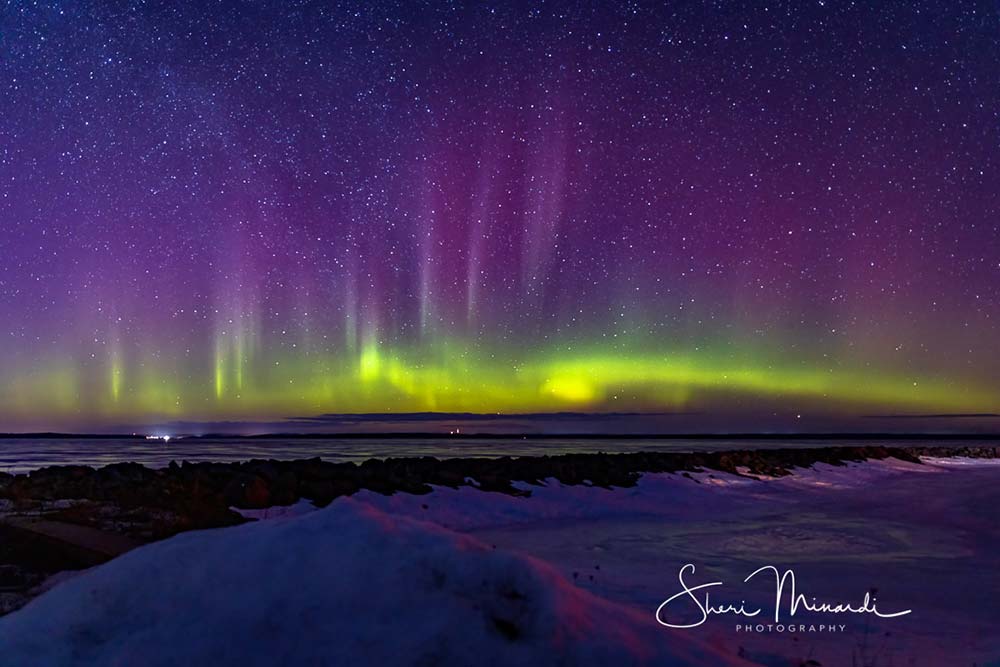
Even though you can see the aurora all year long, the best time of the year is from September to the end of March. You may be able to see them as early as August and as late as April. These months have the longest dark nights.
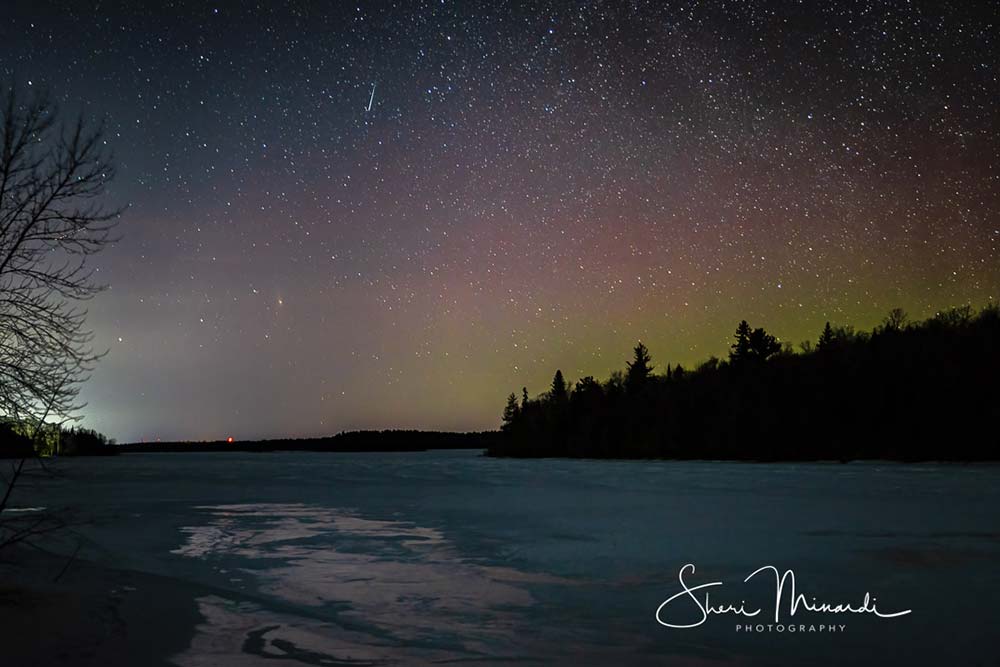
It takes a lot of planning and scouting locations. But even with all of that preparation, you may get skunked due to the geomagnetic storm suddenly dying or a storm quickly blowing in. But it is all worth it. I have been shooting Auroras since 2014 and when a good one hits there is extreme excitement with a lot of “oohing and awing”! It never gets old!
Have a great time hunting the night skies for the Aurora Borealis! It is worth it when all the preparation aligns!
Places to Eat on St. Joseph Island:
You will also need a map of the Island to help you find places to stay and eat.
- Tilt’n Hilton Steakhouse and Bev. Co
- The Black Bear Café and Eatery
- The Wharf
- Whiskey Rocks – Richards Landing Marina
- MadJacks Cafe
Places to Stay on St. Joseph Island:
- Fred’s Trailer Park
- Busy Beaver Camp Ground
- Hilton Beach Tourist Park
- Stonefield House Bed and Breakfast
- Sunnyside Bed and Breakfast
- Maria’s Cabin
- Whiskey Bay Resort and Marina – RV and Cabins
Shops and Services
Related Posts
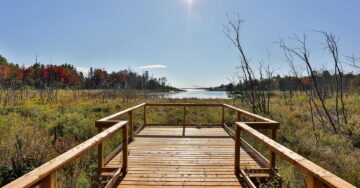
Exciting New Trails in Algoma
It’s no secret that the Algoma Region has some of the best hiking trails...
Read More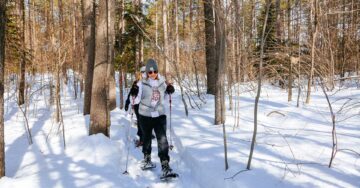
Snowshoeing in Algoma for the Beginner
As the days turn shorter and the mercury begins to drop for the winter...
Read More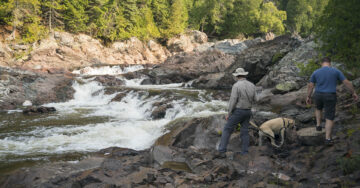
One Week in Algoma Country
A week isn’t long enough in Algoma Country. There’s simply too much to...
Read More